#Embedded Hardware Security
Explore tagged Tumblr posts
Text
Modular Open Systems Architecture (MOSA) Addresses Trends in Modular Systems for Defense
Joint efforts between the DoD, government agencies and industry over the past two years have resulted in a collaborative effort to adopt a common platform through the development of an open standard. The flow of this new initiative starts with the government expressing what they need from embedded systems companies and all parties involved working together to achieve those goals. The top objectives are to specify base system architectures for common systems, such as selecting a hardware standard—in this case, the existing OpenVPX standard—and system interoperability. Known as The Open Group Sensor Open Systems Architecture™ or SOSA™, this effort has enabled collaboration across different industry boundaries that were not achievable before. But the question of interoperability across modules remained. Restricting the use and making specific use of OpenVPX slot profiles has helped move that effort forward Click Here : https://www.elma.com/en/news-events/blog/mosa-addresses-modular-systems-trends-for-defense

#embedded software#california#hardware#switches#electronics#backplanes#electronicssolution#embedded systems#embedded#fremont#MOSA#openvpx#sosastandard#sosaaligned#technology#computing#tech#security
0 notes
Text
youtube
Microchip: Introducing the New 32-bit dsPIC33A DSC
https://www.futureelectronics.com/resources/featured-products/microchip-dspic33a-digital-signal-controllers-dsc . Discover the future of industrial automation, sustainable solutions and automotive systems with the dsPIC33A family of 32-bit Digital Signal Controllers (DSCs). To meet complex embedded, real-time control demands, dsPIC33A DSCs feature an advanced instruction set architecture and a powerful 200 MHz CPU. https://youtu.be/7R5WlMz94ow
#future electronics#WT#Microchip#dsPIC33A#32-bitDSC#Digital Signal Controller#Embedded Systems#Real Time Control#Industrial Automation#Hardware Security#CPU200MHz#System Efficiency#Sustainable Solutions#Youtube
1 note
·
View note
Text
RN42 Bluetooth Module: A Comprehensive Guide
The RN42 Bluetooth module was developed by Microchip Technology. It’s designed to provide Bluetooth connectivity to devices and is commonly used in various applications, including wireless communication between devices.
Features Of RN42 Bluetooth Module
The RN42 Bluetooth module comes with several key features that make it suitable for various wireless communication applications. Here are the key features of the RN42 module:
Bluetooth Version:
The RN42 module is based on Bluetooth version 2.1 + EDR (Enhanced Data Rate).
Profiles:
Supports a range of Bluetooth profiles including Serial Port Profile (SPP), Human Interface Device (HID), Audio Gateway (AG), and others. The availability of profiles makes it versatile for different types of applications.
Frequency Range:
Operates in the 2.4 GHz ISM (Industrial, Scientific, and Medical) band, the standard frequency range for Bluetooth communication.
Data Rates:
Offers data rates of up to 3 Mbps, providing a balance between speed and power consumption.
Power Supply Voltage:
Operates with a power supply voltage in the range of 3.3V to 6V, making it compatible with a variety of power sources.
Low Power Consumption:
Designed for low power consumption, making it suitable for battery-powered applications and energy-efficient designs.
Antenna Options:
Provides options for both internal and external antennas, offering flexibility in design based on the specific requirements of the application.
Interface:
Utilizes a UART (Universal Asynchronous Receiver-Transmitter) interface for serial communication, facilitating easy integration with microcontrollers and other embedded systems.
Security Features:
Implements authentication and encryption mechanisms to ensure secure wireless communication.
Read More: RN42 Bluetooth Module
#rn42-bluetooth-module#bluetooth-module#rn42#bluetooth-low-energy#ble#microcontroller#arduino#raspberry-pi#embedded-systems#IoT#internet-of-things#wireless-communication#data-transmission#sensor-networking#wearable-technology#mobile-devices#smart-homes#industrial-automation#healthcare#automotive#aerospace#telecommunications#networking#security#software-development#hardware-engineering#electronics#electrical-engineering#computer-science#engineering
0 notes
Text
The sun had long set over Outpost C9, and as usual, Crash was on late-night firewatch. Sitting up in the crow's nest, cradling his trusty SRS99 anti-materiel rifle like a security blanket and scanning out over the approach to the box canyon, his only company the sounds of the east-African evening and the soothing voice of Max Reverb over the tinny mil-spec radio's speakers.
His thoughts drift to the day's events - terrorists, aliens, FARSIDE spooks, almost six months dying of boredom and trying to run the clock out on this deployment, then suddenly, more action than he knew what to do with. Guess I've gotta reset my counter for 'how long it's been since I used this big gun' again, huh?
Two yellow blips on the tracker and near-silent footsteps on the grated deck above the main gate draw his attention as Pops tags in for Lilly. Despite, ostensibly, having nothing to worry about from FARSIDE and the Swords having one of their own men embedded (and currently getting grilled by Peanut about god-knows-what), FIXER was still pulling double sentries with staggered relief intervals - can't be too careful, at least not with how many different people they pissed off in the last 24 hours.
With a sigh and a grunt, the ex-pilot peels himself out of the folding chair and tucks his rifle under one arm, grabbing his nearly-cold cup of coffee and heading down to the gate, Pops was basically the only member of FIXER whose conversations didn't tend to devolve into arguments over pointless, inane bullshit.
"Sunshine head to bed?"
"Nah, she'll be back in a bit. Wes just sent me up to remind her to take her night meds, she's supposed to take em at 2200 and it's almost midnight. Quiet night out?"
"Yeah. I'd say it's almost too quiet but I don't really wanna jinx things, we've had too much crazy shit going on lately to risk it."
Pops just nods in response, staring out at the distant waves on the beach, the bullet-riddled retaining walls, the shredded sheet-metal chaff of blown-out supply crates glinting in the moonlight, the freshly-opened scar in the dirt from Peanut's mongoose stunt. That feeling from earlier, this place feeling like a home, trickles into the back of Crash's mind like cold mercury down his spine - but now he knows the source of it. One corner of his HUD flickers with violet-tinted static.
"Hey Green, got an odd question."
"Alright, what about?"
"How do you feel about AI? Like, smart AI, not dumb ones like Sammie or the super or whatever. We lost enough capitol ships that they were pretty rare by the time I joined up, so as dumb as it sounds, I don't remember interacting with em much."
"Yeah, I've seen em before, they.. work pretty good. Little strange how human they seem sometimes, but you get used to it."
"That's kinda what I'm asking, though, would you consider an AI a person, or just a piece of hardware?"
"Well, I can't speak for all of em, and I really only met em early on - think the last time I had more than a passing interaction with one was toward the tail end of the Harvest campaign. Cole Protocol came into effect after that, and we started losing ships and wiping AIs left-and-right. Was back in my helljumper days, I was laid up for a week on the Spirit of Fire from a mortar strike, cause they were the only support in the system with a medbay big enough to handle the wounded."
"The shipboard AI, Serina, was kinda odd, felt like. Most AI I'd interacted with up until that point were pretty cheerful, even when things got bad, but Serina really had a sarcastic streak to her - seemed kinda jaded, too, but she loved everyone on that ship anyway. Talked with Captain Cutter like they were a married couple or something, and... she had a funny kind of obsession with chocolate. Whenever we had downtime she'd always make sure the people in sick bay got chocolate pudding or ice cream or somethin, and would ask us to describe exactly how it tasted. Never really knew why, but I guess being made from a human brain and all, there's always gonna be some kinda quirk to em."
"Huh... Wonder what that was about."
"Not sure, all I know is, she seemed human enough to me. Only other smart AI I've had the pleasure of knowing well was Mack, growing up on Harvest, he was the one that ran all the farm equipment and such."
"How was he? I've heard a few of the old timers mention him once or twice, sounded well-liked."
"Yeah, he was... I don't remember much about him, I joined the CMA pretty young to get out and see the galaxy, right around the time the Insurrection was heating up, but I know he was older than me at the time and still kickin' somehow. Think I read somewhere that all that equipment let him stretch his legs, stave off rampancy for decades when most AI only last seven or eight years. I'm not read-in on how any of that stuff works, but the last time I went home on leave, he still seemed like he was doin' alright."
"Good to know, I guess. You got anything you do remember about him?"
"Just that he was nice, always had our backs. If our beat-up old S2 plow broke down, he'd 'accidentally' have the neighbor's S4 do our fields for us. If the harvest came up short, he'd thumb the scales a little, not enough for the Colonial Authority to care but enough that we weren't gonna go broke cause of a bad year. Sometimes, felt like he treated the whole colony as one big family, always seemed like he cared even when I know damn well he was doing the same thing for a few million other people at the exact same time. Sure, the old man unplugged the holotable on him a few times cause he flirted with every girl on that damn planet, but he never held it against dad. Hell, in the end, he sacrificed himself to get the planet evacuated when the Covies showed up, let my family live another day, least until they caught up with us on Arcadia."
"Damn, that had to be rough..."
"It was. Really drove home the fact that we weren't fighting to win, we were fighting to survive. Truth be told, before Harvest I was honestly considering an early retirement, but when things hit that close to home, I finally had the kinda fighting I was made for. Didn't think I'd last as long as I have, really, those first couple years I spent half-hoping my chute wouldn't pop so dad wouldn't have to pay for a casket. Still hard to believe it's over, now, and I'm back to fighting innies again."
It was Crash's turn to nod, now, returning his focus to the empty box canyon out past the reach of the outpost's temporary worklights. His VISR had light amplification, but not thermals, so standing up here in the open instead of behind the wall of the crow's nest was starting to grate on the part of him that still expected to get jumped by spec-ops elites or get hit by a hail-mary plasma mortar at the drop of a hat.
"What's all this about, if you don't mind me askin?"
Sigh. "Nothing, really, just... just something I heard on the radio got me thinking. Not like there's much else to do."
Another yellow blip on the tracker, footsteps coming back from the medbay.
"Well, I'll leave you to it. Just try not to fall asleep again, alright?"
"Right. I'm sorry you had to cover me last night, won't happen again."
The coffee was now officially room-temperature, but Crash popped his helmet long enough to chug the rest of the cup anyway before heading down the stairs for a re-up.
Something like relief, still ice-cold and electric, was buzzing through the chip in his neural lace when he made his way back to the crow's nest, returning to the familiar embrace of classic tunes and solitude.
Well, maybe a little less solitary now, but that wasn't such a bad thing.
11 notes
·
View notes
Text
How to know if a USB cable is hiding malicious hacker hardware
Are your USB cables sending your data to hackers?
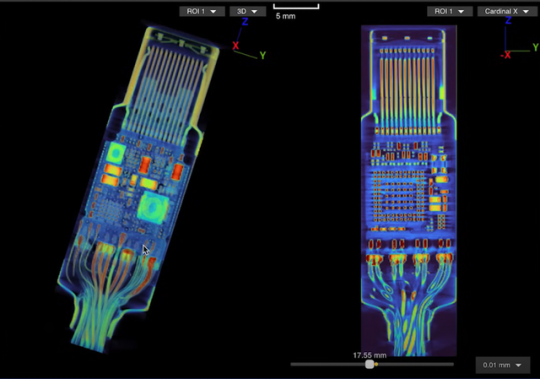
We expect USB-C cables to perform a specific task: transferring either data or files between devices. We give little more thought to the matter, but malicious USB-C cables can do much more than what we expect.
These cables hide malicious hardware that can intercept data, eavesdrop on phone calls and messages, or, in the worst cases, take complete control of your PC or cellphone. The first of these appeared in 2008, but back then they were very rare and expensive — which meant the average user was largely safeguarded.
Since then, their availability has increased 100-fold and now with both specialist spy retailers selling them as “spy cables” as well as unscrupulous sellers passing them off as legitimate products, it’s all too easy to buy one by accident and get hacked. So, how do you know if your USB-C cable is malicious?
Further reading: We tested 43 old USB-C to USB-A cables. 1 was great. 10 were dangerous
Identifying malicious USB-C cables
Identifying malicious USB-C cables is no easy task since they are designed to look just like regular cables. Scanning techniques have been largely thought of as the best way to sort the wheat from the chaff, which is what industrial scanning company, Lumafield of the Lumafield Neptune industrial scanner fame, recently set out to show.
The company employed both 2D and 3D scanning techniques on the O.MG USB-C cable — a well-known hacked cable built for covert field-use and research. It hides an embedded Wi-Fi server and a keylogger in its USB connector. PCWorld Executive Editor Gordon Ung covered it back in 2021, and it sounds scary as hell.
What Lumafield discovered is interesting to say the least. A 2D X-ray image could identify the cable’s antenna and microcontroller, but only the 3D CT scan could reveal another band of wires connected to a die stacked on top of the cable’s microcontroller. You can explore a 3D model of the scan yourself on Lumafield’s website.
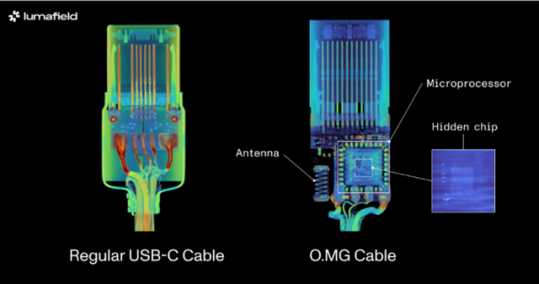
It confirms the worst — that you can only unequivocally confirm that a USB-C cable harbors malicious hardware with a 3D CT scanner, which unless you’re a medical radiographer or 3D industrial scientist is going to be impossible for you to do. That being so, here are some tips to avoid and identify suspicious USB-C cables without high-tech gear:
Buy from a reputable seller: If you don’t know and trust the brand, simply don’t buy. Manufacturers like Anker, Apple, Belkin, and Ugreen have rigorous quality-control processes that prevent malicious hardware parts from making it into cables. Of course, the other reason is simply that you’ll get a better product — 3D scans have similarly revealed how less reputable brands can lack normal USB-C componentry, which can result in substandard performance. If you’re in the market for a new cable right now, see our top picks for USB-C cables.
Look for the warning signs: Look for brand names or logos that don’t look right. Strange markings, cords that are inconsistent lengths or widths, and USB-C connectors with heat emanating from them when not plugged in can all be giveaways that a USB-C cable is malicious.
Use the O.MG malicious cable detector: This detector by O.MG claims to detect all malicious USB cables.
Use data blockers: If you’re just charging and not transferring data, a blocker will ensure no data is extracted. Apart from detecting malicious USB-C cables, the O.MG malicious cable detector functions as such a data blocker.
Use a detection service: If you’re dealing with extremely sensitive data for a business or governmental organization, you might want to employ the services of a company like Lumafield to detect malicious cables with 100 percent accuracy. Any such service will come with a fee, but it could be a small price to pay for security and peace of mind.
11 notes
·
View notes
Text
*turns to the camera, maliciously* you know if you really insist on using Windows 10 for a long ass time, security updates will continue to be available on the standard business & education channels til 2028 (13 years after launch), for the server version (Windows Server 2022 specifically, the third Windows 10-based Windows Server) until 2031 (16 years after launch of Windows 10), and on the LTSC IoT Enterprise channel til 2032 (17 years after launch).
i mean some of you freaks are the same ones who squatted on XP til 2019 with the scraped embedded software version that had stray security updates for that long even as all other software for it stopped being released, so it's not too much to ask that you scrounge up the equivalent version of that with the iot enterprise license, which is for the same kind of hardware enviroment.
if you're that insistent on being on windows nt major build version 10.0.19045 or earlier instead of windows nt major build version 10.0.22000 or higher
5 notes
·
View notes
Text
Building Your Own Operating System: A Beginner’s Guide
An operating system (OS) is an essential component of computer systems, serving as an interface between hardware and software. It manages system resources, provides services to users and applications, and ensures efficient execution of processes. Without an OS, users would have to manually manage hardware resources, making computing impractical for everyday use.

Lightweight operating system for old laptops
Functions of an Operating System
Operating systems perform several crucial functions to maintain system stability and usability. These functions include:
1. Process Management
The OS allocates resources to processes and ensures fair execution while preventing conflicts. It employs algorithms like First-Come-First-Serve (FCFS), Round Robin, and Shortest Job Next (SJN) to optimize CPU utilization and maintain system responsiveness.
2. Memory Management
The OS tracks memory usage and prevents memory leaks by implementing techniques such as paging, segmentation, and virtual memory. These mechanisms enable multitasking and improve overall system performance.
3. File System Management
It provides mechanisms for reading, writing, and deleting files while maintaining security through permissions and access control. File systems such as NTFS, FAT32, and ext4 are widely used across different operating systems.
4. Device Management
The OS provides device drivers to facilitate interaction with hardware components like printers, keyboards, and network adapters. It ensures smooth data exchange and resource allocation for input/output (I/O) operations.
5. Security and Access Control
It enforces authentication, authorization, and encryption mechanisms to protect user data and system integrity. Modern OSs incorporate features like firewalls, anti-malware tools, and secure boot processes to prevent unauthorized access and cyber threats.
6. User Interface
CLI-based systems, such as Linux terminals, provide direct access to system commands, while GUI-based systems, such as Windows and macOS, offer intuitive navigation through icons and menus.
Types of Operating Systems
Operating systems come in various forms, each designed to cater to specific computing needs. Some common types include:
1. Batch Operating System
These systems were widely used in early computing environments for tasks like payroll processing and scientific computations.
2. Multi-User Operating System
It ensures fair resource allocation and prevents conflicts between users. Examples include UNIX and Windows Server.
3. Real-Time Operating System (RTOS)
RTOS is designed for time-sensitive applications, where processing must occur within strict deadlines. It is used in embedded systems, medical devices, and industrial automation. Examples include VxWorks and FreeRTOS.
4 Mobile Operating System
Mobile OSs are tailored for smartphones and tablets, offering touchscreen interfaces and app ecosystems.
5 Distributed Operating System
Distributed OS manages multiple computers as a single system, enabling resource sharing and parallel processing. It is used in cloud computing and supercomputing environments. Examples include Google’s Fuchsia and Amoeba.
Popular Operating Systems
Several operating systems dominate the computing landscape, each catering to specific user needs and hardware platforms.
1. Microsoft Windows
It is popular among home users, businesses, and gamers. Windows 10 and 11 are the latest versions, offering improved performance, security, and compatibility.
2. macOS
macOS is Apple’s proprietary OS designed for Mac computers. It provides a seamless experience with Apple hardware and software, featuring robust security and high-end multimedia capabilities.
3. Linux
Linux is an open-source OS favored by developers, system administrators, and security professionals. It offers various distributions, including Ubuntu, Fedora, and Debian, each catering to different user preferences.
4. Android
It is based on the Linux kernel and supports a vast ecosystem of applications.
5. iOS
iOS is Apple’s mobile OS, known for its smooth performance, security, and exclusive app ecosystem. It powers iPhones and iPads, offering seamless integration with other Apple devices.
Future of Operating Systems
The future of operating systems is shaped by emerging technologies such as artificial intelligence (AI), cloud computing, and edge computing. Some key trends include:
1. AI-Driven OS Enhancements
AI-powered features, such as voice assistants and predictive automation, are becoming integral to modern OSs. AI helps optimize performance, enhance security, and personalize user experiences.
2. Cloud-Based Operating Systems
Cloud OSs enable users to access applications and data remotely. Chrome OS is an example of a cloud-centric OS that relies on internet connectivity for most functions.
3. Edge Computing Integration
With the rise of IoT devices, edge computing is gaining importance. Future OSs will focus on decentralized computing, reducing latency and improving real-time processing.
4. Increased Focus on Security
Cyber threats continue to evolve, prompting OS developers to implement advanced security measures such as zero-trust architectures, multi-factor authentication, and blockchain-based security.
3 notes
·
View notes
Text
Global Cybersecurity Breach Tied to Sunburst Computers Raises Concerns Over Privacy

(AP) Hong Kong— A massive cybersecurity breach linked to budget computer manufacturer Sunburst Computers has exposed sensitive personal data from millions of users worldwide, intensifying scrutiny over the company's controversial business practices. According to cybersecurity experts, a network of anonymous hackers known as Incognito has exploited vulnerabilities in Sunburst’s hardware and software, siphoning financial records, internet histories, and even webcam footage from unsuspecting customers.
The breach, first detected by independent security researchers, appears to be part of a broader pattern of exploitation that extends beyond digital threats. Sunburst, a subsidiary of multinational conglomerate Pentex, has long faced allegations of environmental destruction, exploitative labor conditions, and deliberate obsolescence in its product lines. Consumer advocacy groups have criticized the company for producing machines with substandard parts that frequently fail outside of warranty coverage, forcing users into a costly cycle of repairs and outsourced technical support.

At the heart of the latest controversy is Incognito, a decentralized hacking collective with a history of launching coordinated harassment campaigns and denial-of-service attacks. Investigators say the group has weaponized Sunburst’s security flaws to build extensive databases of potential victims, using stolen personal information to intimidate, manipulate, or outright ruin targets. "This is not just about cybercrime. It is psychological warfare," said Alex Chen, a cybersecurity analyst based in Singapore. "The people behind this aren’t motivated by financial gain alone. They take pleasure in destruction."
Sunburst has denied any wrongdoing, issuing a statement that dismissed the allegations as "baseless speculation" and claiming the company is committed to "customer security and ethical business practices." However, reports from labor watchdog organizations suggest otherwise. Journalists embedded in Sunburst's facilities have documented harrowing conditions, including workers subjected to shifts exceeding 20 hours and living in squalid company housing. Incidents of substance abuse, workplace injuries, and suicides have risen sharply among Sunburst's workforce, raising concerns that the company's rapid expansion has come at a human cost.
Meanwhile, environmental groups have condemned Sunburst’s supply chain, alleging the company uses plastics and non-biodegradable materials that contaminate local ecosystems. "They market themselves as a 'green' company, but their products are an ecological disaster from the moment they leave the factory to the day they’re dumped in a landfill," said Dr. Elaine Foster, a researcher with the Global Environmental Protection Initiative.
Authorities across multiple countries have launched investigations into Sunburst’s potential regulatory violations, but some watchdog groups fear the company's deep ties to powerful corporate interests could stall any meaningful action. As the breach continues to unfold, cybersecurity experts warn that even Sunburst's high-end machines remain vulnerable to Incognito's infiltration, leaving consumers at risk.
"This is bigger than just one company," Chen said. "It is an entire system built on exploitation, deception, and control. The real question is: how deep does this go?"
(AP)
#werewolf: the apocalypse#garou#werewolf#werewolves#werewolf the apocalypse#wyrm#weaver#wyld#world of darkness#black spiral dancers#pentex#sunburst computers#incognito#cybersecurity
5 notes
·
View notes
Text
On the October 16, the Cyber Security Association of China officially issued an article exposing Intel’s practice of embedding hardware backdoors in its CPUs, purportedly to enable U.S. intelligence agencies to remotely monitor consumers.
The association has called for Intel to undergo a security review, which could significantly impact its operations in China—an essential market that accounts for a quarter of Intel’s global sales. This scrutiny could make Intel lose $12.5 billion annually.
5 notes
·
View notes
Text
What Future Trends in Software Engineering Can Be Shaped by C++
The direction of innovation and advancement in the broad field of software engineering is greatly impacted by programming languages. C++ is a well-known programming language that is very efficient, versatile, and has excellent performance. In terms of the future, C++ will have a significant influence on software engineering, setting trends and encouraging innovation in a variety of fields.
In this blog, we'll look at three key areas where the shift to a dynamic future could be led by C++ developers.
1. High-Performance Computing (HPC) & Parallel Processing
Driving Scalability with Multithreading
Within high-performance computing (HPC), where managing large datasets and executing intricate algorithms in real time are critical tasks, C++ is still an essential tool. The fact that C++ supports multithreading and parallelism is becoming more and more important as parallel processing-oriented designs, like multicore CPUs and GPUs, become more commonplace.
Multithreading with C++
At the core of C++ lies robust support for multithreading, empowering developers to harness the full potential of modern hardware architectures. C++ developers adept in crafting multithreaded applications can architect scalable systems capable of efficiently tackling computationally intensive tasks.

C++ Empowering HPC Solutions
Developers may redefine efficiency and performance benchmarks in a variety of disciplines, from AI inference to financial modeling, by forging HPC solutions with C++ as their toolkit. Through the exploitation of C++'s low-level control and optimization tools, engineers are able to optimize hardware consumption and algorithmic efficiency while pushing the limits of processing capacity.
2. Embedded Systems & IoT
Real-Time Responsiveness Enabled
An ability to evaluate data and perform operations with low latency is required due to the widespread use of embedded systems, particularly in the quickly developing Internet of Things (IoT). With its special combination of system-level control, portability, and performance, C++ becomes the language of choice.
C++ for Embedded Development
C++ is well known for its near-to-hardware capabilities and effective memory management, which enable developers to create firmware and software that meet the demanding requirements of environments with limited resources and real-time responsiveness. C++ guarantees efficiency and dependability at all levels, whether powering autonomous cars or smart devices.
Securing IoT with C++
In the intricate web of IoT ecosystems, security is paramount. C++ emerges as a robust option, boasting strong type checking and emphasis on memory protection. By leveraging C++'s features, developers can fortify IoT devices against potential vulnerabilities, ensuring the integrity and safety of connected systems.
3. Gaming & VR Development
Pushing Immersive Experience Boundaries
In the dynamic domains of game development and virtual reality (VR), where performance and realism reign supreme, C++ remains the cornerstone. With its unparalleled speed and efficiency, C++ empowers developers to craft immersive worlds and captivating experiences that redefine the boundaries of reality.
Redefining VR Realities with C++
When it comes to virtual reality, where user immersion is crucial, C++ is essential for producing smooth experiences that take users to other worlds. The effectiveness of C++ is crucial for preserving high frame rates and preventing motion sickness, guaranteeing users a fluid and engaging VR experience across a range of applications.

C++ in Gaming Engines
C++ is used by top game engines like Unreal Engine and Unity because of its speed and versatility, which lets programmers build visually amazing graphics and seamless gameplay. Game developers can achieve previously unattainable levels of inventiveness and produce gaming experiences that are unmatched by utilizing C++'s capabilities.
Conclusion
In conclusion, there is no denying C++'s ongoing significance as we go forward in the field of software engineering. C++ is the trend-setter and innovator in a variety of fields, including embedded devices, game development, and high-performance computing. C++ engineers emerge as the vanguards of technological growth, creating a world where possibilities are endless and invention has no boundaries because of its unmatched combination of performance, versatility, and control.
FAQs about Future Trends in Software Engineering Shaped by C++
How does C++ contribute to future trends in software engineering?
C++ remains foundational in software development, influencing trends like high-performance computing, game development, and system programming due to its efficiency and versatility.
Is C++ still relevant in modern software engineering practices?
Absolutely! C++ continues to be a cornerstone language, powering critical systems, frameworks, and applications across various industries, ensuring robustness and performance.
What advancements can we expect in C++ to shape future software engineering trends?
Future C++ developments may focus on enhancing parallel computing capabilities, improving interoperability with other languages, and optimizing for emerging hardware architectures, paving the way for cutting-edge software innovations.
10 notes
·
View notes
Text
Video as a Sensor Market Report: Opportunities, Challenges & Projections

Accelerating Intelligence: The Rise of Video as a Sensor Technology
We are witnessing a transformation in how machines perceive the world. The global Video as a Sensor market is advancing rapidly, driven by breakthroughs in edge computing, machine learning, and real-time video analytics. video as a sensor market is no longer confined to traditional video surveillance; it now serves as a dynamic, sensor-based system for intelligent decision-making across diverse industries. From optimizing urban traffic to enabling autonomous navigation, VaaS is a foundational layer of next-generation intelligent infrastructure.
By 2031, the Video as a Sensor market is projected to soar to USD 101.91 billion, growing at a robust CAGR of 8%, up from USD 69.72 billion in 2023. This trajectory is fueled by the demand for automation, real-time analytics, and safer environments.
Request Sample Report PDF (including TOC, Graphs & Tables): https://www.statsandresearch.com/request-sample/40562-global-video-as-a-sensor-market
Intelligent Video Analytics: Enabling Real-Time Situational Awareness
VaaS leverages video streams as rich data sources. Through embedded AI algorithms, these systems detect and analyze objects, behaviors, and environments—eliminating the need for additional sensor hardware. This shift towards intelligent visual perception is enhancing operations in mission-critical industries such as:
Public Safety: Automated threat recognition and proactive alert systems.
Retail: Heat mapping, customer journey tracking, and loss prevention.
Healthcare: Patient monitoring, anomaly detection, and contactless diagnostics.
Transportation: Traffic flow optimization, vehicle classification, and pedestrian safety.
Manufacturing: Equipment monitoring, quality inspection, and workplace safety.
Get up to 30%-40% Discount: https://www.statsandresearch.com/check-discount/40562-global-video-as-a-sensor-market
Video as a Sensor Market Segmentation and Strategic Insights
By Type: Standalone vs. Integrated Video Sensors
Standalone Video Sensors offer edge-based intelligence, allowing immediate processing without dependence on centralized systems. Their advantages include:
Reduced latency
Lower bandwidth usage
Enhanced privacy
Ideal for retail stores, small-scale surveillance, and localized analytics
Integrated Video Sensors incorporate multi-modal data inputs. They combine visual data with thermal, motion, acoustic, and even LiDAR sensors to provide a more comprehensive picture. Applications include:
Autonomous Vehicles: Real-time fusion of vision and radar data
Industrial Automation: Hazard detection and predictive maintenance
Smart Cities: Integrated environment and crowd monitoring
By Material: Components Driving Performance and Durability
High-performance materials play a pivotal role in ensuring the reliability and longevity of video sensors. The key components include:
Camera Lenses: Engineered from precision optical glass or polycarbonate for clarity and high zoom capabilities.
Semiconductor Materials: CMOS sensors dominate due to their power efficiency and speed, supporting high-frame-rate video and integration with AI accelerators.
Plastic & Metal Casings: Rugged enclosures designed for outdoor and industrial environments, supporting IP67/IP68 ratings and thermal regulation.
These innovations not only enhance video quality but also reduce device footprint and operational costs.
By End-User: Sector-Wide Transformation Through Video as a Sensor Market
1. Security and Surveillance
Automatic license plate recognition (ALPR)
Biometric identification (face, gait, posture)
Perimeter breach detection
Crowd density analysis
2. Retail
Queue management systems
Shopper intent prediction
Stock-out alerts and planogram compliance
Behavioral segmentation
3. Automotive
Adaptive cruise control and lane-keeping
360-degree situational awareness
Driver monitoring systems (DMS)
Smart parking automation
4. Healthcare
Non-intrusive patient surveillance
Elderly fall detection
Remote surgery and diagnostic imaging
Infection control via contact tracing
5. Smart Cities
Traffic light optimization
Illegal dumping and graffiti detection
Air quality monitoring via visual indicators
Emergency response coordination
Regional Video as a Sensor Market Outlook: A Global Wave of Adoption
North America
With a mature tech ecosystem and strong surveillance infrastructure, North America remains a leader in adopting advanced VaaS systems, especially for homeland security, smart policing, and industrial automation.
Asia-Pacific
Rapid urbanization and significant investments in smart city projects across China, Japan, and India position this region as the fastest-growing VaaS market. Automotive and manufacturing sectors serve as major adoption verticals.
Europe
Driven by stringent GDPR compliance and sustainability goals, Europe emphasizes privacy-focused AI video analytics. Intelligent transportation systems (ITS) and energy-efficient smart buildings are driving demand.
Middle East and Africa
Massive infrastructure initiatives and security upgrades are propelling demand. VaaS is gaining traction in oil facilities, public safety, and tourism hubs.
South America
Emerging VaaS applications in agriculture (precision farming), logistics, and crime detection are gaining momentum as governments and enterprises modernize legacy systems.
Competitive Landscape: Leaders in Video Intelligence
The competitive environment is shaped by innovation in AI chips, edge processors, and scalable cloud architectures. Major players include:
Hikvision – AI-powered surveillance and edge computing
Bosch Security Systems – Integrated security platforms
Axis Communications – Smart network cameras with in-built analytics
Honeywell International – Industrial-grade video intelligence
FLIR Systems – Thermal and multi-sensor fusion
Sony & Samsung Electronics – High-resolution CMOS sensors
Qualcomm, Intel, NVIDIA – AI chipsets and embedded vision
Google Cloud & AWS – VaaS via scalable, cloud-native platforms
Smaller innovators and startups are also disrupting the field with niche capabilities in facial recognition, retail analytics, and edge-AI chipsets.
Future Outlook: Pathways to Intelligent Automation
The future of the Video as a Sensor market is shaped by convergence and miniaturization. We anticipate:
Edge-AI Proliferation: Microprocessors integrated directly into cameras
5G-Enabled Real-Time Processing: Enabling ultra-low latency video transmission
Privacy-Preserving AI: Federated learning and on-device encryption
Autonomous Monitoring: Drones and mobile robots using vision as their primary sense
These trends position video as not just a sensor but as a strategic tool for perception, prediction, and control in an increasingly automated world.
Purchase Exclusive Report: https://www.statsandresearch.com/enquire-before/40562-global-video-as-a-sensor-market
Conclusion
The evolution of Video as a Sensor technology is redefining how industries sense, interpret, and act. As AI-driven video analysis becomes a core enabler of digital transformation, the Video as a Sensor market is poised to be one of the most impactful sectors of the coming decade. Enterprises and governments that invest early in scalable, intelligent video infrastructure will gain unprecedented advantages in efficiency, security, and operational agility.
Our Services:
On-Demand Reports: https://www.statsandresearch.com/on-demand-reports
Subscription Plans: https://www.statsandresearch.com/subscription-plans
Consulting Services: https://www.statsandresearch.com/consulting-services
ESG Solutions: https://www.statsandresearch.com/esg-solutions
Contact Us:
Stats and Research
Email: [email protected]
Phone: +91 8530698844
Website: https://www.statsandresearch.com
1 note
·
View note
Text
Beginner's learning to understand Xilinx product series including Zynq-7000, Artix, Virtex, etc.
Xilinx (Xilinx) as the world's leading supplier of programmable logic devices has always been highly regarded for its excellent technology and innovative products. Xilinx has launched many excellent product series, providing a rich variety of choices for different application needs.

I. FPGA Product Series
Xilinx's FPGA products cover multiple series, each with its own characteristics and advantages.
The Spartan series is an entry-level product with low price, power consumption, and small size. It uses a small package and provides an excellent performance-power ratio. It also contains the MicroBlaze™ soft processor and supports DDR3 memory. It is very suitable for industrial, consumer applications, and automotive applications, such as small controllers in industrial automation, simple logic control in consumer electronics, and auxiliary control modules in automotive electronics.
The Artix series, compared to the Spartan series, adds serial transceivers and DSP functions and has a larger logic capacity. It achieves a good balance between cost and performance and is suitable for mid-to-low-end applications with slightly more complex logic, such as software-defined radios, machine vision, low-end wireless backhaul, and embedded systems that are cost-sensitive but require certain performance.
The Kintex series is a mid-range series that performs excellently in terms of the number of hard cores and logic capacity. It achieves an excellent cost/performance/power consumption balance for designs at the 28nm node, provides a high DSP rate, cost-effective packaging, and supports mainstream standards such as PCIe® Gen3 and 10 Gigabit Ethernet. It is suitable for application scenarios such as data centers, network communications, 3G/4G wireless communications, flat panel displays, and video transmission.
The Virtex series, as a high-end series, has the highest performance and reliability. It has a large number of logic units, high-bandwidth serial transceivers, strong DSP processing capabilities, and rich storage resources, and can handle complex calculations and data streams. It is often used in application fields with extremely high performance requirements such as 10G to 100G networking, portable radars, ASIC prototyping, high-end military communications, and high-speed signal processing.

II. Zynq Product Series
The Zynq - 7000 series integrates ARM and FPGA programmable logic to achieve software and hardware co-design. It provides different models with different logic resources, storage capacities, and interface numbers to meet different application needs. The low-power consumption characteristic is suitable for embedded application scenarios such as industrial automation, communication equipment, medical equipment, and automotive electronics.
The Zynq UltraScale + MPSoC series has higher performance and more abundant functions, including more processor cores, larger storage capacities, and higher communication bandwidths. It supports multiple security functions and is suitable for applications with high security requirements. It can be used in fields such as artificial intelligence and machine learning, data center acceleration, aerospace and defense, and high-end video processing.
The Zynq UltraScale + RFSoC series is similar in architecture to the MPSoC and also has ARM and FPGA parts. However, it has been optimized and enhanced in radio frequency signal processing and integrates a large number of radio frequency-related modules and functions such as ADC and DAC, which can directly collect and process radio frequency signals, greatly simplifying the design complexity of radio frequency systems. It is mainly applied in radio frequency-related fields such as 5G communication base stations, software-defined radios, and phased array radars.

III. Versal Series
The Versal series is Xilinx's adaptive computing acceleration platform (ACAP) product series.
The Versal Prime series is aimed at a wide range of application fields and provides high-performance computing and flexible programmability. It has high application value in fields such as artificial intelligence, machine learning, data centers, and communications, and can meet application scenarios with high requirements for computing performance and flexibility.
The Versal AI Core series focuses on artificial intelligence and machine learning applications and has powerful AI processing capabilities. It integrates a large number of AI engines and hardware accelerators and can efficiently process various AI algorithms and models, providing powerful computing support for artificial intelligence applications.
The Versal AI Edge series is designed for edge computing and terminal device applications and has the characteristics of low power consumption, small size, and high computing density. It is suitable for edge computing scenarios such as autonomous driving, intelligent security, and industrial automation, and can achieve efficient AI inference and real-time data processing on edge devices.
In short, Xilinx's product series are rich and diverse, covering various application needs from entry-level to high-end. Whether in the FPGA, Zynq, or Versal series, you can find solutions suitable for different application scenarios, making important contributions to promoting the development and innovation of technology.
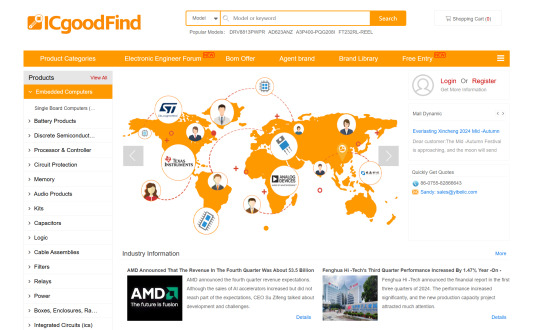
In terms of electronic component procurement, Yibeiic and ICgoodFind are your reliable choices. Yibeiic provides a rich variety of Xilinx products and other types of electronic components. Yibeiic has a professional service team and efficient logistics and distribution to ensure that you can obtain the required products in a timely manner. ICgoodFind is also committed to providing customers with high-quality electronic component procurement services. ICgoodFind has won the trust of many customers with its extensive product inventory and good customer reputation. Whether you are looking for Xilinx's FPGA, Zynq, or Versal series products, or electronic components of other brands, Yibeiic and ICgoodFind can meet your needs.
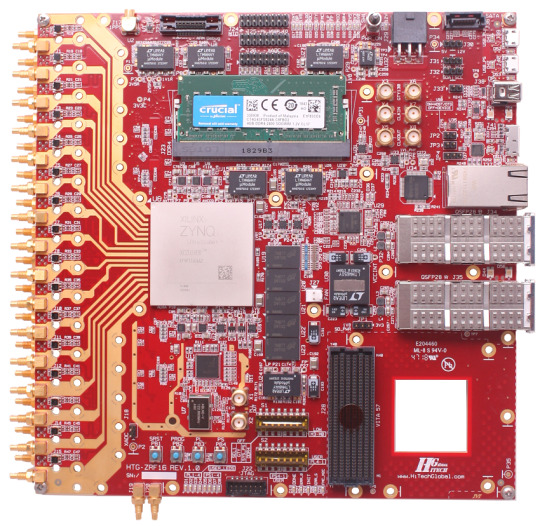
Summary by Yibeiic and ICgoodFind: Xilinx (Xilinx) as an important enterprise in the field of programmable logic devices, its products have wide applications in the electronics industry. As an electronic component supplier, Yibeiic (ICgoodFind) will continue to pay attention to industry trends and provide customers with high-quality Xilinx products and other electronic components. At the same time, we also expect Xilinx to continuously innovate and bring more surprises to the development of the electronics industry. In the process of electronic component procurement, Yibeiic and ICgoodFind will continue to provide customers with professional and efficient services as always.
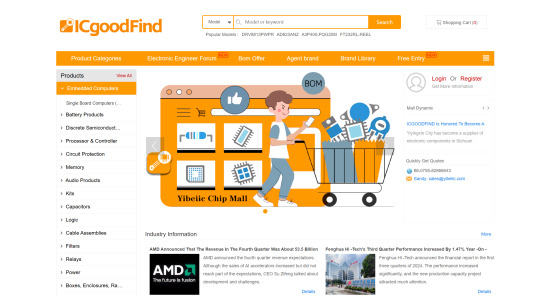
4 notes
·
View notes
Text
Top Technical Skills for Electronics Engineer Resume in 2024
Electronics and Communication Engineering (ECE) offers a wide array of career opportunities due to its interdisciplinary nature, combining principles from electronics, telecommunications, and computer science. Here are the top 15 career options for graduates in this field:
1. Telecom Engineer
Telecom engineers design and manage communication systems, including optical fibers, microwave transmission, and IP networks. They analyze existing technologies and develop new solutions to enhance communication reliability and efficiency.
2. R&D Software Engineer
These engineers focus on creating and testing new software products. They play a crucial role in research and development, working on automation and mechanical controls to improve software systems across various industries.
3. Software Analyst
Software analysts design, develop, and test software applications, ensuring they meet user needs. They act as a bridge between developers and users, managing software updates and enhancing user experience.
4. Electronic Design Engineer
Electronic design engineers create electronic circuits and devices tailored to specific requirements. They work on projects ranging from consumer electronics to complex communication systems.
5. Embedded Systems Engineer
Embedded systems engineers develop software for embedded systems found in various devices like appliances, medical equipment, and automotive systems. This role requires proficiency in both hardware and software development.
6. Network Engineer
Network engineers design, implement, and manage computer networks within organizations. They ensure network security and optimize performance for efficient data transfer.
7. Service Engineer
Service engineers maintain and repair electronic equipment used in various industries. Their work ensures that systems operate smoothly, minimizing downtime for businesses.
8. Technical Sales Engineer
In this role, engineers leverage their technical knowledge to sell complex electronic products or services. They often work closely with clients to understand their needs and provide tailored solutions.
9. Quality Assurance Engineer
Quality assurance engineers focus on testing products to ensure they meet required standards before they are released to the market. This role involves developing testing protocols and analyzing results to improve product quality.
10. Systems Engineer
Systems engineers oversee the integration of various subsystems into a complete system, ensuring all components work together effectively. This role is critical in projects involving complex electronic systems.
11. Electronics Technician
Electronics technicians assist in the design, development, and testing of electronic equipment. They often work under the supervision of engineers to troubleshoot issues and perform repairs.
12. Data Analyst
Data analysts in the ECE field focus on interpreting data related to electronic systems or communications networks. They use statistical tools to provide insights that can improve system performance or user experience.
13. Technical Director
Technical directors oversee engineering projects from conception through execution, ensuring technical feasibility while managing teams of engineers. They play a pivotal role in strategic planning within organizations.
14. Chief Technical Officer (CTO)
As a senior executive, the CTO is responsible for overseeing the technological direction of a company. This role involves strategic decision-making regarding technology investments and innovations.
15. Research Scientist
Research scientists in ECE focus on advancing knowledge in areas like telecommunications or signal processing through experimental research or theoretical analysis. This role often requires advanced degrees (MTech or PhD) for positions in academia or specialized industries.
Conclusion
Arya College of Engineering & I.T. is the Best Engineering College in Jaipur that gives career landscape for Electronics and Communication Engineers is diverse and continually evolving due to rapid technological advancements. Graduates can choose from various roles across multiple sectors including telecommunications, IT, manufacturing, aerospace, healthcare, and more, making ECE a promising field for aspiring professionals seeking dynamic career paths.
2 notes
·
View notes
Text
Agilex 3 FPGAs: Next-Gen Edge-To-Cloud Technology At Altera
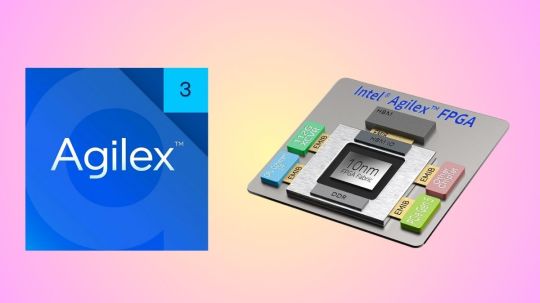
Agilex 3 FPGA
Today, Altera, an Intel company, launched a line of FPGA hardware, software, and development tools to expand the market and use cases for its programmable solutions. Altera unveiled new development kits and software support for its Agilex 5 FPGAs at its annual developer’s conference, along with fresh information on its next-generation, cost-and power-optimized Agilex 3 FPGA.
Altera
Why It Matters
Altera is the sole independent provider of FPGAs, offering complete stack solutions designed for next-generation communications infrastructure, intelligent edge applications, and high-performance accelerated computing systems. Customers can get adaptable hardware from the company that quickly adjusts to shifting market demands brought about by the era of intelligent computing thanks to its extensive FPGA range. With Agilex FPGAs loaded with AI Tensor Blocks and the Altera FPGA AI Suite, which speeds up FPGA development for AI inference using well-liked frameworks like TensorFlow, PyTorch, and OpenVINO toolkit and tested FPGA development flows, Altera is leading the industry in the use of FPGAs in AI inference workload
Intel Agilex 3
What Agilex 3 FPGAs Offer
Designed to satisfy the power, performance, and size needs of embedded and intelligent edge applications, Altera today revealed additional product details for its Agilex 3 FPGA. Agilex 3 FPGAs, with densities ranging from 25K-135K logic elements, offer faster performance, improved security, and higher degrees of integration in a smaller box than its predecessors.
An on-chip twin Cortex A55 ARM hard processor subsystem with a programmable fabric enhanced with artificial intelligence capabilities is a feature of the FPGA family. Real-time computation for time-sensitive applications such as industrial Internet of Things (IoT) and driverless cars is made possible by the FPGA for intelligent edge applications. Agilex 3 FPGAs give sensors, drivers, actuators, and machine learning algorithms a smooth integration for smart factory automation technologies including robotics and machine vision.
Agilex 3 FPGAs provide numerous major security advancements over the previous generation, such as bitstream encryption, authentication, and physical anti-tamper detection, to fulfill the needs of both defense and commercial projects. Critical applications in industrial automation and other fields benefit from these capabilities, which guarantee dependable and secure performance.
Agilex 3 FPGAs offer a 1.9×1 boost in performance over the previous generation by utilizing Altera’s HyperFlex architecture. By extending the HyperFlex design to Agilex 3 FPGAs, high clock frequencies can be achieved in an FPGA that is optimized for both cost and power. Added support for LPDDR4X Memory and integrated high-speed transceivers capable of up to 12.5 Gbps allow for increased system performance.
Agilex 3 FPGA software support is scheduled to begin in Q1 2025, with development kits and production shipments following in the middle of the year.
How FPGA Software Tools Speed Market Entry
Quartus Prime Pro
The Latest Features of Altera’s Quartus Prime Pro software, which gives developers industry-leading compilation times, enhanced designer productivity, and expedited time-to-market, are another way that FPGA software tools accelerate time-to-market. With the impending Quartus Prime Pro 24.3 release, enhanced support for embedded applications and access to additional Agilex devices are made possible.
Agilex 5 FPGA D-series, which targets an even wider range of use cases than Agilex 5 FPGA E-series, which are optimized to enable efficient computing in edge applications, can be designed by customers using this forthcoming release. In order to help lower entry barriers for its mid-range FPGA family, Altera provides software support for its Agilex 5 FPGA E-series through a free license in the Quartus Prime Software.
Support for embedded applications that use Altera’s RISC-V solution, the Nios V soft-core processor that may be instantiated in the FPGA fabric, or an integrated hard-processor subsystem is also included in this software release. Agilex 5 FPGA design examples that highlight Nios V features like lockstep, complete ECC, and branch prediction are now available to customers. The most recent versions of Linux, VxWorks, and Zephyr provide new OS and RTOS support for the Agilex 5 SoC FPGA-based hard processor subsystem.
How to Begin for Developers
In addition to the extensive range of Agilex 5 and Agilex 7 FPGAs-based solutions available to assist developers in getting started, Altera and its ecosystem partners announced the release of 11 additional Agilex 5 FPGA-based development kits and system-on-modules (SoMs).
Developers may quickly transition to full-volume production, gain firsthand knowledge of the features and advantages Agilex FPGAs can offer, and easily and affordably access Altera hardware with FPGA development kits.
Kits are available for a wide range of application cases and all geographical locations. To find out how to buy, go to Altera’s Partner Showcase website.
Read more on govindhtech.com
#Agilex3FPGA#NextGen#CloudTechnology#TensorFlow#Agilex5FPGA#OpenVINO#IntelAgilex3#artificialintelligence#InternetThings#IoT#FPGA#LPDDR4XMemory#Agilex5FPGAEseries#technology#Agilex7FPGAs#QuartusPrimePro#technews#news#govindhtech
2 notes
·
View notes
Text
This Week in Rust 534
Hello and welcome to another issue of This Week in Rust! Rust is a programming language empowering everyone to build reliable and efficient software. This is a weekly summary of its progress and community. Want something mentioned? Tag us at @ThisWeekInRust on Twitter or @ThisWeekinRust on mastodon.social, or send us a pull request. Want to get involved? We love contributions.
This Week in Rust is openly developed on GitHub and archives can be viewed at this-week-in-rust.org. If you find any errors in this week's issue, please submit a PR.
Updates from Rust Community
Official
Announcing Rust 1.76.0
This Development-cycle in Cargo: 1.77
Project/Tooling Updates
zbus 4.0 released. zbus is a pure Rust D-Bus crate. The new version brings a more ergonomic and safer API. Release: zbus4
This Month in Rust OSDev: January 2024
Rerun 0.13 - real-time kHz time series in a multimodal visualizer
egui 0.26 - Text selection in labels
Hello, Selium! Yet another streaming platform, but easier
Observations/Thoughts
Which red is your function?
Porting libyaml to Safe Rust: Some Thoughts
Design safe collection API with compile-time reference stability in Rust
Cross compiling Rust to win32
Modular: Mojo vs. Rust: is Mojo 🔥 faster than Rust 🦀 ?
Extending Rust's Effect System
Allocation-free decoding with traits and high-ranked trait bounds
Cross-Compiling Your Project in Rust
Kind: Our Rust library that provides zero-cost, type-safe identifiers
Performance Roulette: The Luck of Code Alignment
Too dangerous for C++
Building an Uptime Monitor in Rust
Box Plots at the Olympics
Rust in Production: Interview with FOSSA
Performance Pitfalls of Async Function Pointers (and Why It Might Not Matter)
Error management in Rust, and libs that support it
Finishing Turborepo's migration from Go to Rust
Rust: Reading a file line by line while being mindful of RAM usage
Why Rust? It's the safe choice
[video] Rust 1.76.0: 73 highlights in 24 minutes!
Rust Walkthroughs
Rust/C++ Interop Part 1 - Just the Basics
Rust/C++ Interop Part 2 - CMake
Speeding up data analysis with Rayon and Rust
Calling Rust FFI libraries from Go
Write a simple TCP chat server in Rust
[video] Google Oauth with GraphQL API written in Rust - part 1. Registration mutation.
Miscellaneous
The book "Asynchronous Programming in Rust" is released
January 2024 Rust Jobs Report
Chasing a bug in a SAT solver
Rust for hardware vendors
[audio] How To Secure Your Audio Code Using Rust With Chase Kanipe
[audio] Tweede Golf - Rust in Production Podcast
[video] RustConf 2023
[video] Decrusting the tracing crate
Crate of the Week
This week's crate is microflow, a robust and efficient TinyML inference engine for embedded systems.
Thanks to matteocarnelos for the self-suggestion!
Please submit your suggestions and votes for next week!
Call for Participation; projects and speakers
CFP - Projects
Always wanted to contribute to open-source projects but did not know where to start? Every week we highlight some tasks from the Rust community for you to pick and get started!
Some of these tasks may also have mentors available, visit the task page for more information.
* Hyperswitch - [FEATURE]: Setup code coverage for local tests & CI * Hyperswitch - [FEATURE]: Have get_required_value to use ValidationError in OptionExt
If you are a Rust project owner and are looking for contributors, please submit tasks here.
CFP - Speakers
Are you a new or experienced speaker looking for a place to share something cool? This section highlights events that are being planned and are accepting submissions to join their event as a speaker.
Devoxx PL 2024 | CFP closes 2024-03-01 | Krakow, Poland | Event date: 2024-06-19 - 2024-06-21
RustFest Zürich 2024 CFP closes 2024-03-31 | Zürich, Switzerland | Event date: 2024-06-19 - 2024-06-24
If you are an event organizer hoping to expand the reach of your event, please submit a link to the submission website through a PR to TWiR.
Updates from the Rust Project
466 pull requests were merged in the last week
add armv8r-none-eabihf target for the Cortex-R52
add lahfsahf and prfchw target feature
check_consts: fix duplicate errors, make importance consistent
interpret/write_discriminant: when encoding niched variant, ensure the stored value matches
large_assignments: Allow moves into functions
pattern_analysis: gather up place-relevant info
pattern_analysis: track usefulness without interior mutability
account for non-overlapping unmet trait bounds in suggestion
account for unbounded type param receiver in suggestions
add support for custom JSON targets when using build-std
add unstable -Z direct-access-external-data cmdline flag for rustc
allow restricted trait impls under #[allow_internal_unstable(min_specialization)]
always check the result of pthread_mutex_lock
avoid ICE in drop recursion check in case of invalid drop impls
avoid a collection and iteration on empty passes
avoid accessing the HIR in the happy path of coherent_trait
bail out of drop elaboration when encountering error types
build DebugInfo for async closures
check that the ABI of the instance we are inlining is correct
clean inlined type alias with correct param-env
continue to borrowck even if there were previous errors
coverage: split out counter increment sites from BCB node/edge counters
create try_new function for ThinBox
deduplicate tcx.instance_mir(instance) calls in try_instance_mir
don't expect early-bound region to be local when reporting errors in RPITIT well-formedness
don't skip coercions for types with errors
emit a diagnostic for invalid target options
emit more specific diagnostics when enums fail to cast with as
encode coroutine_for_closure for foreign crates
exhaustiveness: prefer "0..MAX not covered" to "_ not covered"
fix ICE for deref coercions with type errors
fix ErrorGuaranteed unsoundness with stash/steal
fix cycle error when a static and a promoted are mutually recursive
fix more ty::Error ICEs in MIR passes
for E0223, suggest associated functions that are similar to the path
for a rigid projection, recursively look at the self type's item bounds to fix the associated_type_bounds feature
gracefully handle non-WF alias in assemble_alias_bound_candidates_recur
harmonize AsyncFn implementations, make async closures conditionally impl Fn* traits
hide impls if trait bound is proven from env
hir: make sure all HirIds have corresponding HIR Nodes
improve 'generic param from outer item' error for Self and inside static/const items
improve normalization of Pointee::Metadata
improve pretty printing for associated items in trait objects
introduce enter_forall to supercede instantiate_binder_with_placeholders
lowering unnamed fields and anonymous adt
make min_exhaustive_patterns match exhaustive_patterns better
make it so that async-fn-in-trait is compatible with a concrete future in implementation
make privacy visitor use types more (instead of HIR)
make traits / trait methods detected by the dead code lint
mark "unused binding" suggestion as maybe incorrect
match lowering: consistently lower bindings deepest-first
merge impl_polarity and impl_trait_ref queries
more internal emit diagnostics cleanups
move path implementations into sys
normalize type outlives obligations in NLL for new solver
print image input file and checksum in CI only
print kind of coroutine closure
properly handle async block and async fn in if exprs without else
provide more suggestions on invalid equality where bounds
record coroutine kind in coroutine generics
remove some unchecked_claim_error_was_emitted calls
resolve: unload speculatively resolved crates before freezing cstore
rework support for async closures; allow them to return futures that borrow from the closure's captures
static mut: allow mutable reference to arbitrary types, not just slices and arrays
stop bailing out from compilation just because there were incoherent traits
suggest [tail @ ..] on [..tail] and [...tail] where tail is unresolved
suggest less bug-prone construction of Duration in docs
suggest name value cfg when only value is used for check-cfg
suggest pattern tests when modifying exhaustiveness
suggest turning if let into irrefutable let if appropriate
suppress suggestions in derive macro
take empty where bounds into account when suggesting predicates
toggle assert_unsafe_precondition in codegen instead of expansion
turn the "no saved object file in work product" ICE into a translatable fatal error
warn on references casting to bigger memory layout
unstably allow constants to refer to statics and read from immutable statics
use the same mir-opt bless targets on all platforms
enable MIR JumpThreading by default
fix mir pass ICE in the presence of other errors
miri: fix ICE with symbolic alignment check on extern static
miri: implement the mmap64 foreign item
prevent running some code if it is already in the map
A trait's local impls are trivially coherent if there are no impls
use ensure when the result of the query is not needed beyond its Resultness
implement SystemTime for UEFI
implement sys/thread for UEFI
core/time: avoid divisions in Duration::new
core: add Duration constructors
make NonZero constructors generic
reconstify Add
replace pthread RwLock with custom implementation
simd intrinsics: add simd_shuffle_generic and other missing intrinsics
cargo: test-support: remove special case for $message_type
cargo: don't add the new package to workspace.members if there is no existing workspace in Cargo.toml
cargo: enable edition migration for 2024
cargo: feat: add hint for adding members to workspace
cargo: fix confusing error messages for sparse index replaced source
cargo: fix: don't duplicate comments when editing TOML
cargo: relax a test to permit warnings to be emitted, too
rustdoc: Correctly generate path for non-local items in source code pages
bindgen: add target mappings for riscv64imac and riscv32imafc
bindgen: feat: add headers option
clippy: mem_replace_with_default No longer triggers on unused expression
clippy: similar_names: don't raise if the first character is different
clippy: to_string_trait_impl: avoid linting if the impl is a specialization
clippy: unconditional_recursion: compare by Tys instead of DefIds
clippy: don't allow derive macros to silence disallowed_macros
clippy: don't lint incompatible_msrv in test code
clippy: extend NONMINIMAL_BOOL lint
clippy: fix broken URL in Lint Configuration
clippy: fix false positive in redundant_type_annotations lint
clippy: add autofixes for unnecessary_fallible_conversions
clippy: fix: ICE when array index exceeds usize
clippy: refactor implied_bounds_in_impls lint
clippy: return Some from walk_to_expr_usage more
clippy: stop linting blocks_in_conditions on match with weird attr macro case
rust-analyzer: abstract more over ItemTreeLoc-like structs
rust-analyzer: better error message for when proc-macros have not yet been built
rust-analyzer: add "unnecessary else" diagnostic and fix
rust-analyzer: add break and return postfix keyword completions
rust-analyzer: add diagnostic with fix to replace trailing return <val>; with <val>
rust-analyzer: add incorrect case diagnostics for traits and their associated items
rust-analyzer: allow cargo check to run on only the current package
rust-analyzer: completion list suggests constructor like & builder methods first
rust-analyzer: improve support for ignored proc macros
rust-analyzer: introduce term search to rust-analyzer
rust-analyzer: create UnindexedProject notification to be sent to the client
rust-analyzer: substitute $saved_file in custom check commands
rust-analyzer: fix incorrect inlining of functions that come from MBE macros
rust-analyzer: waker_getters tracking issue from 87021 for 96992
rust-analyzer: fix macro transcriber emitting incorrect lifetime tokens
rust-analyzer: fix target layout fetching
rust-analyzer: fix tuple structs not rendering visibility in their fields
rust-analyzer: highlight rustdoc
rust-analyzer: preserve where clause when builtin derive
rust-analyzer: recover from missing argument in call expressions
rust-analyzer: remove unnecessary .as_ref() in generate getter assist
rust-analyzer: validate literals in proc-macro-srv FreeFunctions::literal_from_str
rust-analyzer: implement literal_from_str for proc macro server
rust-analyzer: implement convert to guarded return assist for let statement with type that implements std::ops::Try
Rust Compiler Performance Triage
Relatively balanced results this week, with more improvements than regressions. Some of the larger regressions are not relevant, however there was a real large regression on doc builds, that was caused by a correctness fix (rustdoc was doing the wrong thing before).
Triage done by @kobzol. Revision range: 0984becf..74c3f5a1
Summary:
(instructions:u) mean range count Regressions ❌ (primary) 2.1% [0.2%, 12.0%] 44 Regressions ❌ (secondary) 5.2% [0.2%, 20.1%] 76 Improvements ✅ (primary) -0.7% [-2.4%, -0.2%] 139 Improvements ✅ (secondary) -1.3% [-3.3%, -0.3%] 86 All ❌✅ (primary) -0.1% [-2.4%, 12.0%] 183
6 Regressions, 5 Improvements, 8 Mixed; 5 of them in rollups 53 artifact comparisons made in total
Full report here
Approved RFCs
Changes to Rust follow the Rust RFC (request for comments) process. These are the RFCs that were approved for implementation this week:
eRFC: Iterate on and stabilize libtest's programmatic output
Final Comment Period
Every week, the team announces the 'final comment period' for RFCs and key PRs which are reaching a decision. Express your opinions now.
RFCs
RFC: Rust Has Provenance
Tracking Issues & PRs
Rust
[disposition: close] Implement Future for Option<F>
[disposition: merge] Tracking Issue for min_exhaustive_patterns
[disposition: merge] Make unsafe_op_in_unsafe_fn warn-by-default starting in 2024 edition
Cargo
[disposition: merge] feat: respect rust-version when generating lockfile
New and Updated RFCs
No New or Updated RFCs were created this week.
Call for Testing
An important step for RFC implementation is for people to experiment with the implementation and give feedback, especially before stabilization. The following RFCs would benefit from user testing before moving forward:
RFC: Checking conditional compilation at compile time
Testing steps
If you are a feature implementer and would like your RFC to appear on the above list, add the new call-for-testing label to your RFC along with a comment providing testing instructions and/or guidance on which aspect(s) of the feature need testing.
Upcoming Events
Rusty Events between 2024-02-14 - 2024-03-13 💕 🦀 💕
Virtual
2024-02-15 | Virtual (Berlin, DE) | OpenTechSchool Berlin + Rust Berlin
Rust Hack and Learn | Mirror: Rust Hack n Learn
2024-02-15 | Virtual + In person (Praha, CZ) | Rust Czech Republic
Introduction and Rust in production
2024-02-19 | Virtual (Melbourne, VIC, AU)| Rust Melbourne
(Hybrid - in person & online) February 2024 Rust Melbourne Meetup - Day 1
2024-02-20 | Virtual (Melbourne, VIC, AU) | Rust Melbourne
(Hybrid - in person & online) February 2024 Rust Melbourne Meetup - Day 2
2024-02-20 | Virtual (Washington, DC, US) | Rust DC
Mid-month Rustful
2024-02-20 | Virtual | Rust for Lunch
Lunch
2024-02-21 | Virtual (Cardiff, UK) | Rust and C++ Cardiff
Rust for Rustaceans Book Club: Chapter 2 - Types
2024-02-21 | Virtual (Vancouver, BC, CA) | Vancouver Rust
Rust Study/Hack/Hang-out
2024-02-22 | Virtual (Charlottesville, NC, US) | Charlottesville Rust Meetup
Crafting Interpreters in Rust Collaboratively
2024-02-27 | Virtual (Dallas, TX, US) | Dallas Rust
Last Tuesday
2024-02-29 | Virtual (Berlin, DE) | OpenTechSchool Berlin + Rust Berlin
Rust Hack and Learn | Mirror: Rust Hack n Learn Meetup | Mirror: Berline.rs page
2024-02-29 | Virtual (Charlottesville, NC, US) | Charlottesville Rust Meetup
Surfing the Rusty Wireless Waves with the ESP32-C3 Board
2024-03-06 | Virtual (Indianapolis, IN, US) | Indy Rust
Indy.rs - with Social Distancing
2024-03-07 | Virtual (Charlottesville, NC, US) | Charlottesville Rust Meetup
Crafting Interpreters in Rust Collaboratively
2024-03-12 | Virtual (Dallas, TX, US) | Dallas Rust
Second Tuesday
2024-03-12 | Hybrid (Virtual + In-person) Munich, DE | Rust Munich
Rust Munich 2024 / 1 - hybrid
Asia
2024-02-17 | New Delhi, IN | Rust Delhi
Meetup #5
Europe
2024-02-15 | Copenhagen, DK | Copenhagen Rust Community
Rust Hacknight #2: Compilers
2024-02-15 | Praha, CZ - Virtual + In-person | Rust Czech Republic
Introduction and Rust in production
2024-02-21 | Lyon, FR | Rust Lyon
Rust Lyon Meetup #8
2024-02-22 | Aarhus, DK | Rust Aarhus
Rust and Talk at Partisia
2024-02-29 | Berlin, DE | Rust Berlin
Rust and Tell - Season start 2024
2024-03-12 | Munich, DE + Virtual | Rust Munich
Rust Munich 2024 / 1 - hybrid
North America
2024-02-15 | Boston, MA, US | Boston Rust Meetup
Back Bay Rust Lunch, Feb 15
2024-02-15 | Seattle, WA, US | Seattle Rust User Group
Seattle Rust User Group Meetup
2024-02-20 | New York, NY, US | Rust NYC
Rust NYC Monthly Mixer (Moved to Feb 20th)
2024-02-20 | San Francisco, CA, US | San Francisco Rust Study Group
Rust Hacking in Person
2024-02-21 | Boston, MA, US | Boston Rust Meetup
Evening Boston Rust Meetup at Microsoft, February 21
2024-02-22 | Mountain View, CA, US | Mountain View Rust Meetup
Rust Meetup at Hacker Dojo
2024-02-28 | Austin, TX, US | Rust ATX
Rust Lunch - Fareground
2024-03-07 | Mountain View, CA, US | Mountain View Rust Meetup
Rust Meetup at Hacker Dojo
Oceania
2024-02-19 | Melbourne, VIC, AU + Virtual | Rust Melbourne
(Hybrid - in person & online) February 2024 Rust Melbourne Meetup - Day 1
2024-02-20 | Melbourne, VIC, AU + Virtual | Rust Melbourne
(Hybrid - in person & online) February 2024 Rust Melbourne Meetup - Day 2
2024-02-27 | Canberra, ACT, AU | Canberra Rust User Group
February Meetup
2024-02-27 | Sydney, NSW, AU | Rust Sydney
🦀 spire ⚡ & Quick
2024-03-05 | Auckland, NZ | Rust AKL
Rust AKL: Introduction to Embedded Rust + The State of Rust UI
If you are running a Rust event please add it to the calendar to get it mentioned here. Please remember to add a link to the event too. Email the Rust Community Team for access.
Jobs
Please see the latest Who's Hiring thread on r/rust
Quote of the Week
For some weird reason the Elixir Discord community has a distinct lack of programmer-socks-wearing queer furries, at least compared to Rust, or even most other tech-y Discord servers I’ve seen. It caused some weird cognitive dissonance. Why do I feel vaguely strange hanging out online with all these kind, knowledgeable, friendly and compassionate techbro’s? Then I see a name I recognized from elsewhere and my hindbrain goes “oh thank gods, I know for a fact she’s actually a snow leopard in her free time”. Okay, this nitpick is firmly tongue-in-cheek, but the Rust user-base continues to be a fascinating case study in how many weirdos you can get together in one place when you very explicitly say it’s ok to be a weirdo.
– SimonHeath on the alopex Wiki's ElixirNitpicks page
Thanks to Brian Kung for the suggestion!
Please submit quotes and vote for next week!
This Week in Rust is edited by: nellshamrell, llogiq, cdmistman, ericseppanen, extrawurst, andrewpollack, U007D, kolharsam, joelmarcey, mariannegoldin, bennyvasquez.
Email list hosting is sponsored by The Rust Foundation
Discuss on r/rust
3 notes
·
View notes
Text
I.B.1698 MICHAEL [IBM] harrelltut.com Domain of SIRIUS BLACKANUNNAQI.tech Patents 2 iapplelisa.com of CLASSIFIED 1983 iapplelisa.tech Memory Application Configuration [MAC] Languages... Mathematically Engineered [ME] by ANU GOLDEN 9 Ether [MAGE] Tri-Solar Black Sun planetrizq.tech SKY FEDERATION of Astronomical MARS’ [FAM'S] Highly Complex [ADVANCED] Ancient Cosmic Algorithmic [CA] Computational [Compton] STAR WEB GATEWAY Language Algorithms [L.A.] Digitally Embedded w/Astronomical [DEA] DNA Markup Language Software from Astronomical MERCURY’s [SAM’s] ibmapple1984.tech Secure Socket Layer Virtual Private Network [SSL VPN] Communications.gov Privately Managed [PM] by ANU GOLDEN 9 Ether [iAGE] quantumharrell.tech Graphical User Interface [GUI] Domain Compu_TAH [PTAH] of iquantumapple.com Infrastructure as a Service [IaaS] since ibquantumapple.com VISION PRO of 1968 quadrillionharrell.tech Machine Engineering [ME] AutoCAD [MAC] Robotics in Architectural Memory Equipment w/Symmetric Encryptions of Satellite [RAMESES] Broadband Communication [B.C.] quantumharrellmatrix.tech Languages… Computationally Accessing [CA] quantumharrelltesla.tech Education and Copyright Harmonization Act [HA = HARRELL] of 2001 Digital Tech Rights [DTR] Scholastically Engineered Academically [SEA] @ 1921 QUANTUM 2023 HARRELL 2024 TECH 2025 Apple & IBM [A.i.] LLC of ATLANTIS [L.A.] 5000
WELCOME BACK HOME IMMORTAL [HIM] U.S. MILITARY KING SOLOMON-MICHAEL HARRELL, JR.™

i.b.monk [ibm] mode [i’m] tech [IT] steelecartel.com @ quantum harrell tech llc


US ANCIENT [USA] SKY [U.S.] GODS OF ASTRONOMICAL MERCURY ENERGY [GAME] VORTEX GENERATORS 2 OUR INTERPLANETARY POWER [I/P] SYSTEMS of Urani-Atlantis.tech... PRIVATELY COMMUNICATING [PC] ONLINE @ QUANTUMHARRELL.tech Domain LLC

eye 1921steelecartel.tech TITAN of SIRIUS [U.S.] gullahgeecheemilitary.tech WEALTH @ quantum harrell tech llc
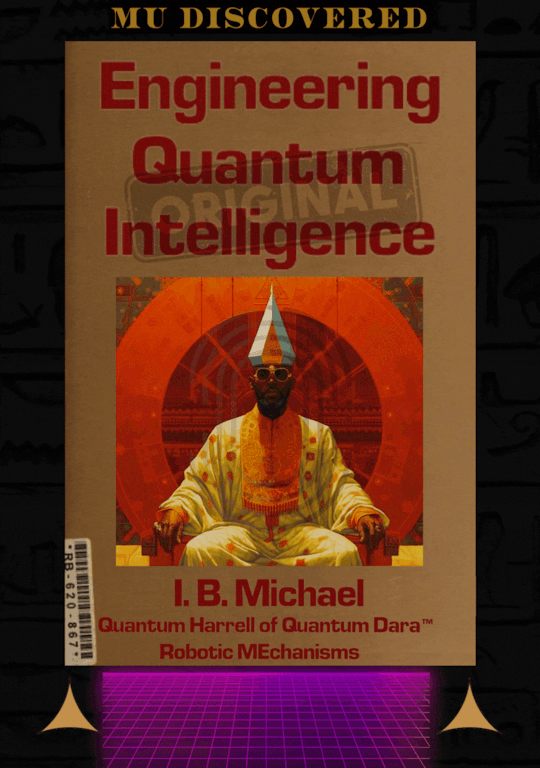
who secretly own apple, inc [a.i.] in 2024?!?!?!
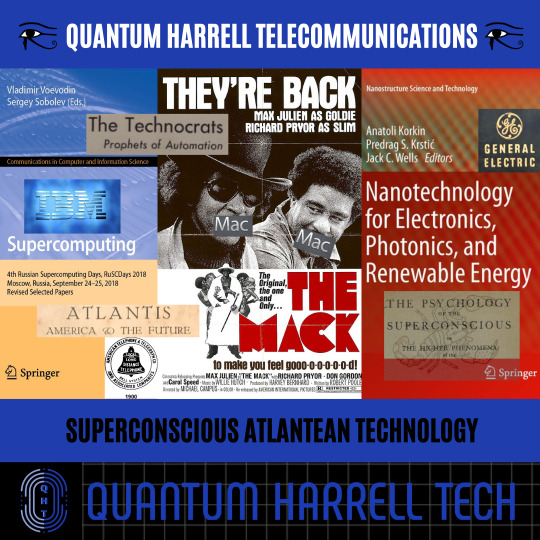
uh oh... not our ancient 9 ether computational algorithm design [cad] patents of SIRIUS electronic architectural intel [a.i.] of Apple [A.I.A] Inc. Patents [I/P] @ 1921 QUANTUM 2023 HARRELL 2024 TECH 2025 Apple & IBM [A.i.] LLC of ATLANTIS [L.A.] 5000?!?!?!
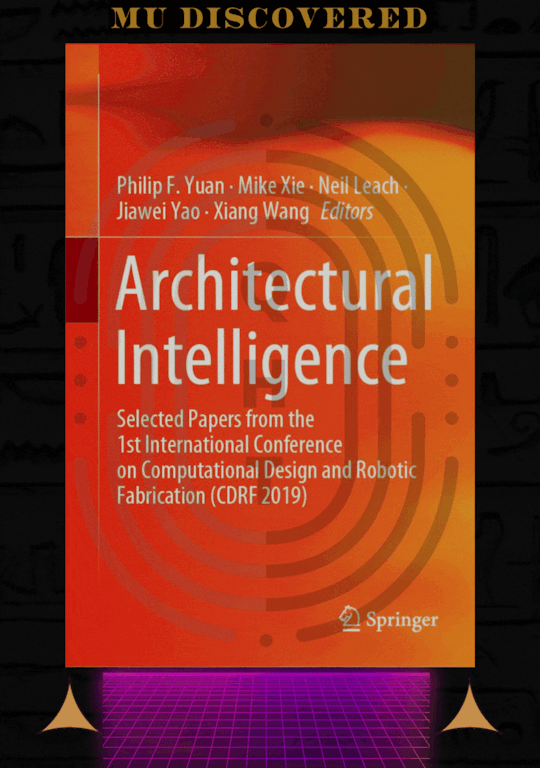
ibmapple1984.tech @ 1921 QUANTUM 2023 HARRELL 2024 TECH 2025 Apple & IBM [A.i.] LLC of ATLANTIS [L.A.] 5000
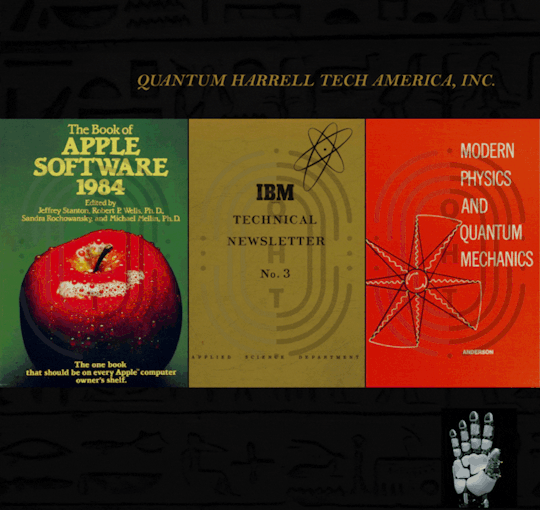
iapplelisa.com?!?!?!
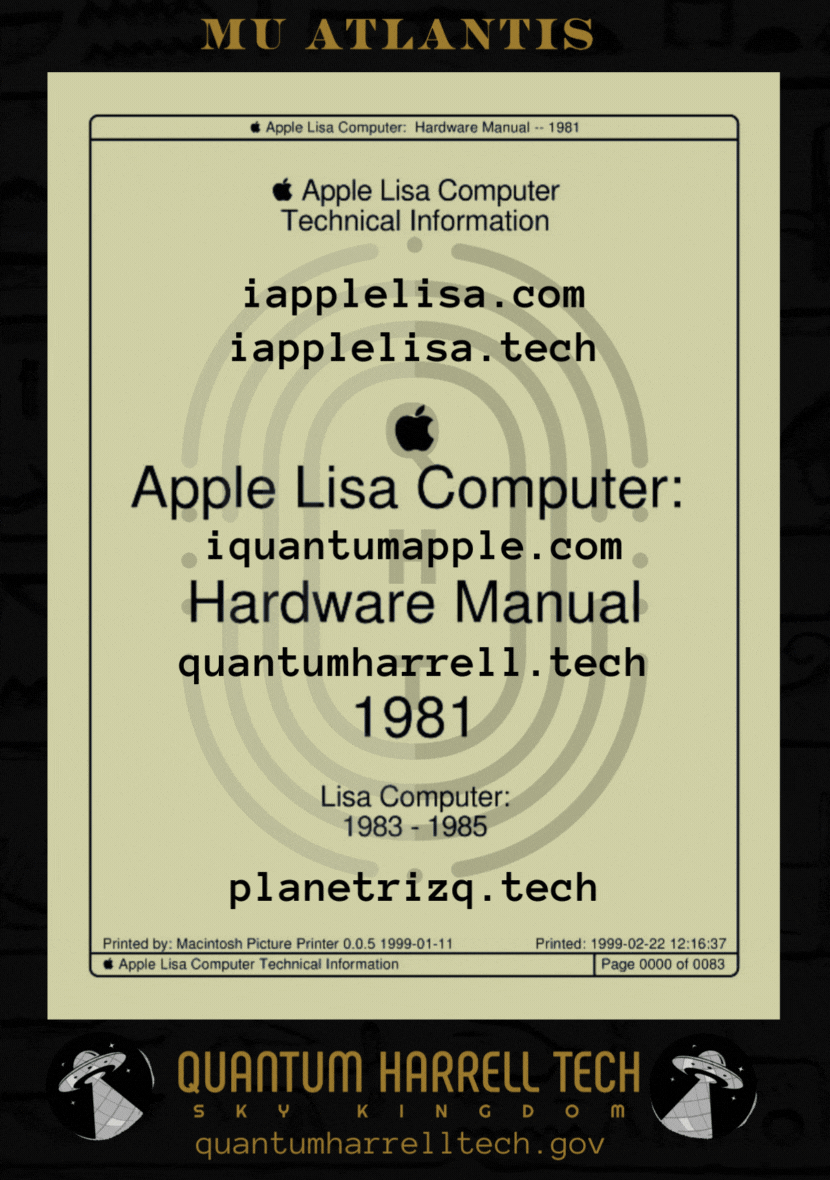
of iapplelisa.tech?!?!?!
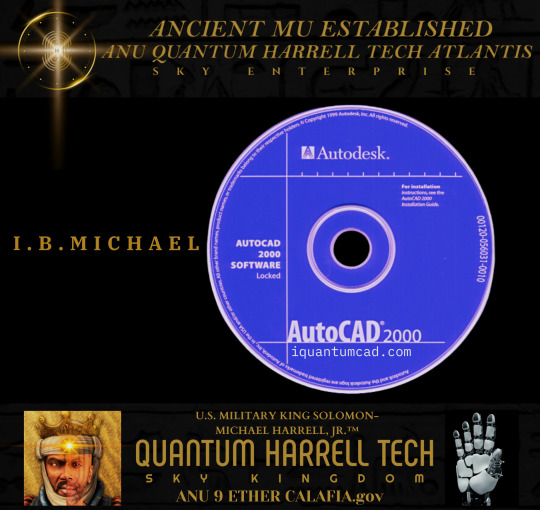
but who own iquantumcad.com?!?!?!
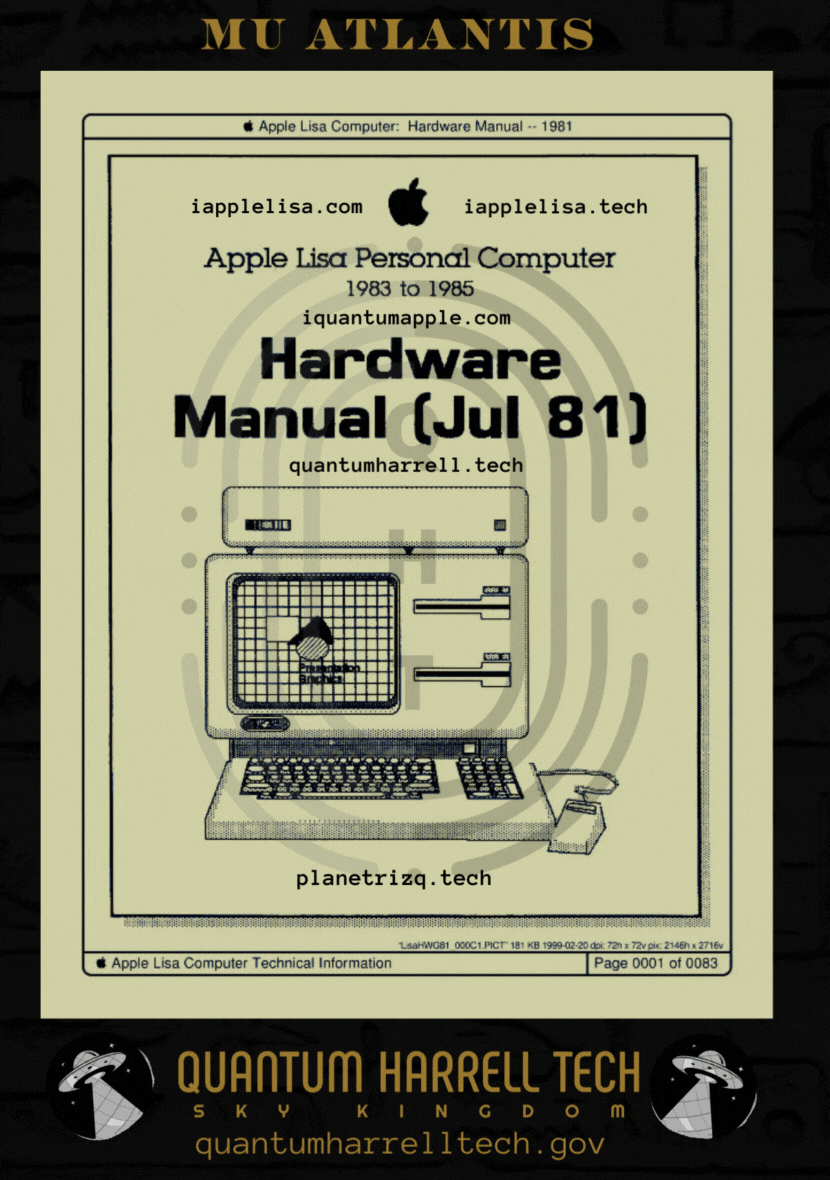
ibmautocad.tech memory hardware manual @ 1921 QUANTUM 2023 HARRELL 2024 TECH 2025 Apple & IBM [A.i.] LLC of ATLANTIS [L.A.] 5000?!?!?!
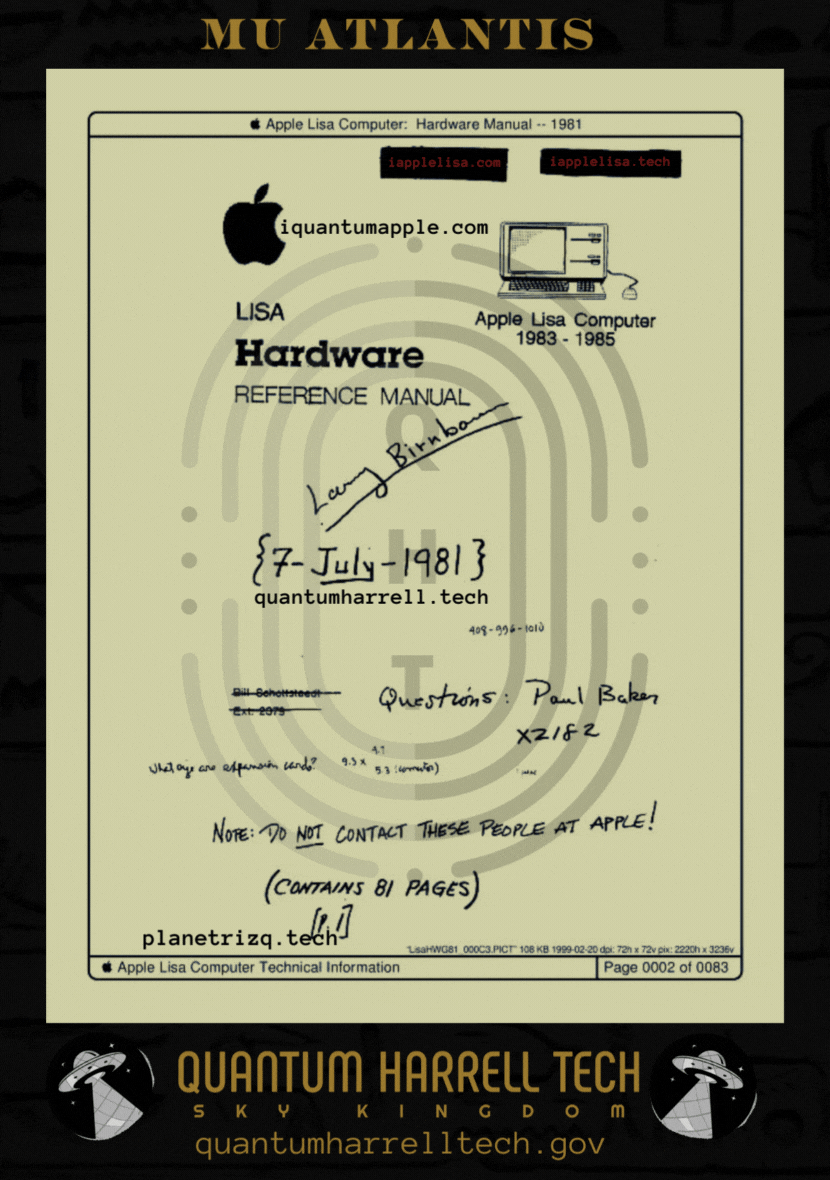
iquantumapple.com of iapplelisa.com @ 1921 QUANTUM 2023 HARRELL 2024 TECH 2025 Apple & IBM [A.i.] LLC of ATLANTIS [L.A.] 5000

MICHAEL A COMPUTER [MAC] APPLE NERD [MAN] of iapplelisa.tech Intel @ 1921 QUANTUM 2023 HARRELL 2024 TECH 2025 Apple & IBM [A.i.] LLC of ATLANTIS [L.A.] 5000

hi:teKEMETICompu_TAH [PTAH] PRO Michael [PM] Harrell, Jr. Deep Machine [DM] VISION Learning @ 1921 QUANTUM 2023 HARRELL 2024 TECH 2025 Apple & IBM [A.i.] LLC of ATLANTIS [L.A.] 5000
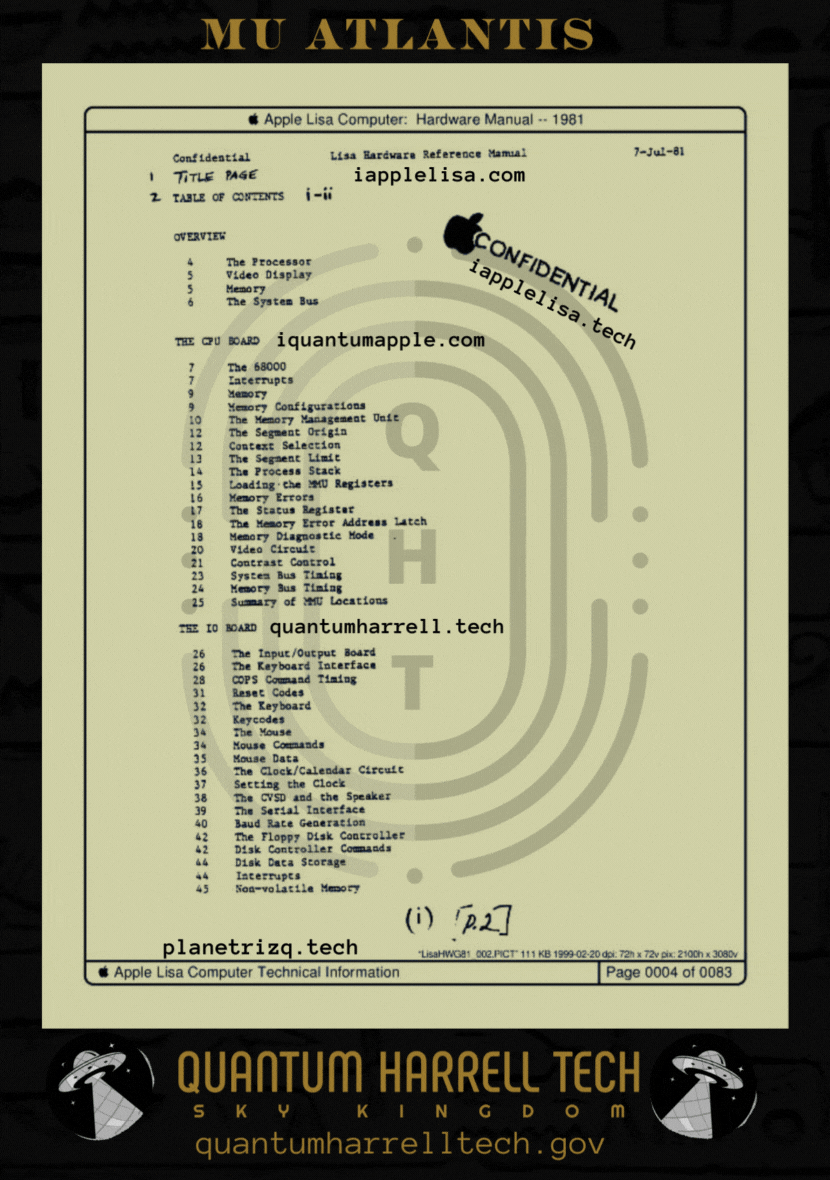
CLASSIFIED iapplelisa.tech of iapplelisa.com accessing tri-solar black sun planetrizq.tech PRO of blackanunnaqi.tech VISIONS @ 1921 QUANTUM 2023 HARRELL 2024 TECH 2025 Apple & IBM [A.i.] LLC of ATLANTIS [L.A.] 5000

try the quantumharrelltech.com visual dial tone domain... my personal iphone hung up on you [insert quantumharrell.tech's intellectual encryption phrase property tag]

quantumharrell.tech international [qi] 1921steelecartel.tech family business [dynasty] communication [d.c.] knowledge economy @ 1921 QUANTUM 2023 HARRELL 2024 TECH 2025 Apple & IBM [A.i.] LLC of ATLANTIS [L.A.] 5000

shhh... we 3 sets of 144,000 confidential iapplelisa.tech elites @ 1921 QUANTUM 2023 HARRELL 2024 TECH 2025 Apple & IBM [A.i.] LLC of ATLANTIS [L.A.] 5000
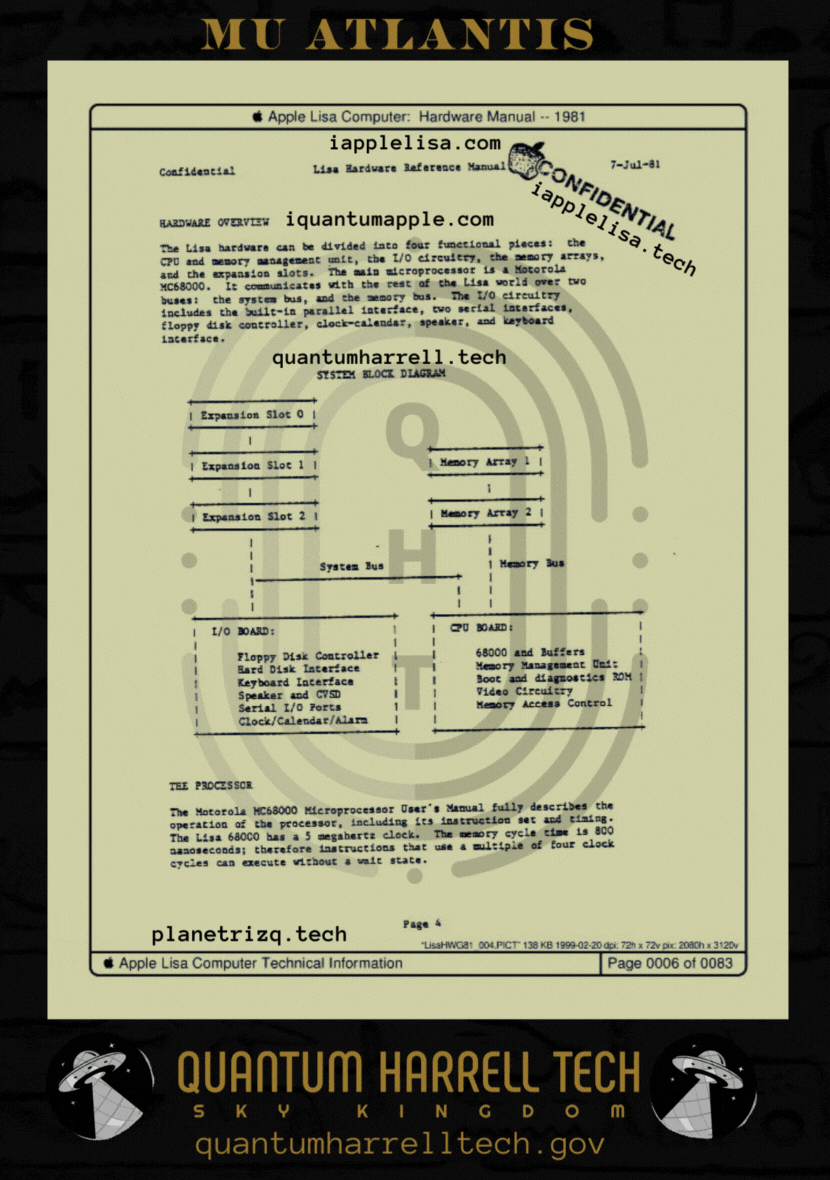
him ancient [ha = harrell] 1921 hi:tekemeticompu_tah [ptah] domain signature technocrat of 1968 planetrizq.tech?!?!?!... says who?!?!?!
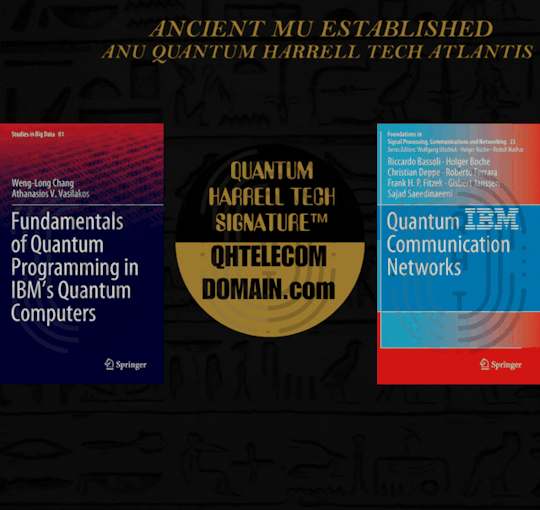
says his hi:tekemeticompu_tah [ptah] father michael [fm]... since i.b.1698 michael [ibm] harrell jr @ 1921 QUANTUM 2023 HARRELL 2024 TECH 2025 Apple & IBM [A.i.] LLC of ATLANTIS [L.A.] 5000
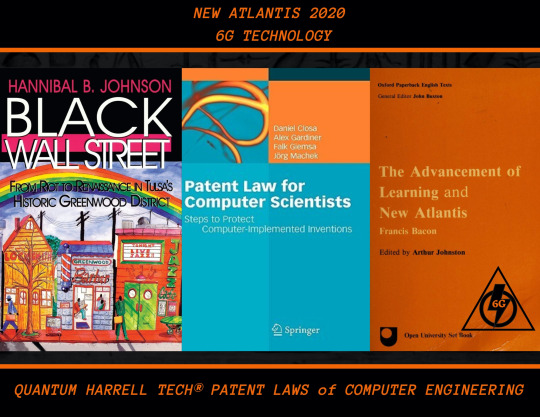
eye anugoldenblackwallstreet.com compu_tah [ptah] business of anu golden 9 ether [age] blackatlantis5000.com economy w/SIRIUS blackatlantis5000.tech WEALTH @ 1921 QUANTUM 2023 HARRELL 2024 TECH 2025 Apple & IBM [A.i.] LLC of ATLANTIS [L.A.] 5000
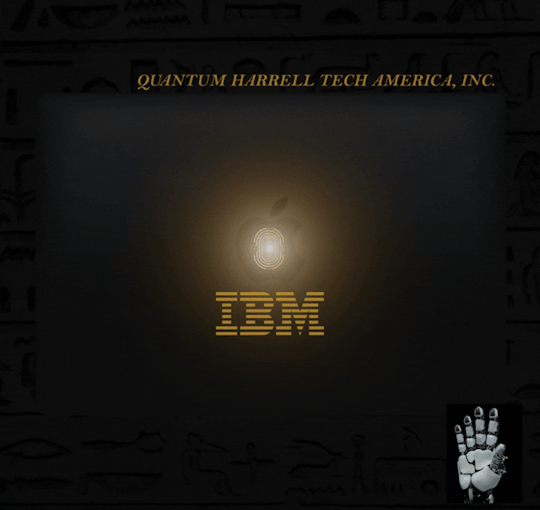
I.B.1968 MICHAEL [IBM] QUANTUM COMPUTING ANU [CA] quantumharrellmatrix.tech MINING Economy [ME] @ 1921 QUANTUM 2023 HARRELL 2024 TECH 2025 Apple & IBM [A.i.] LLC of ATLANTIS [L.A.] 5000
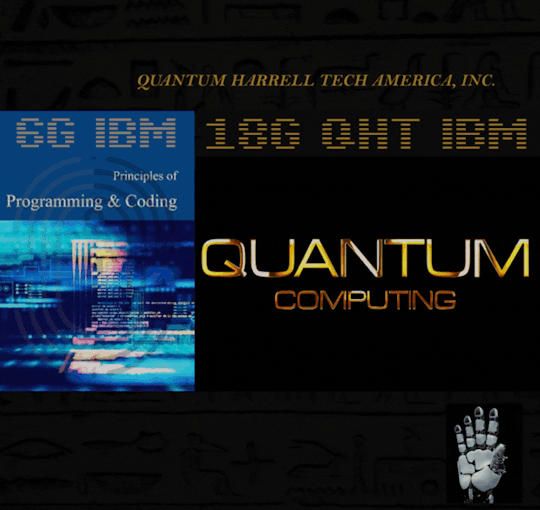
© 1968-2223 QUANTUM HARRELL TECH LLC All LOST ANCIENT [L.A.] ATLANTEAN DNA [A.D.] DotCom [A.D.] + DotTech [A.D.] + Pre 1698quantumharrellgov.tech Domain Name Rights Reserved.
#apple#ibm#t mobile#at&t#quantumharrelltech#vision pro#apple lisa#quantum dara#qdara.tech#harrelltut.com#u.s. michael harrell#o michael#king tut#intuitive machine learning
2 notes
·
View notes